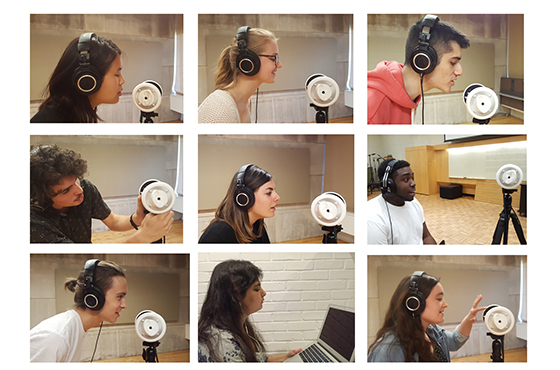
Wes Out-Loud: Stories of Place
Thursday, April 28, 2016 at 5:00pm
CFA Courtyard - TIME CHANGED
$8 general public; $5 senior citizens, Wesleyan faculty/staff/alumni, non-Wesleyan students; $4 Wesleyan students
Friday, April 29, 2016 at 3:00pm
CFA Courtyard
$8 general public; $5 senior citizens, Wesleyan faculty/staff/alumni, non-Wesleyan students; $4 Wesleyan students
Friday, April 29, 2016 at 5:00pm
CFA Courtyard - TIME CHANGED
$8 general public; $5 senior citizens, Wesleyan faculty/staff/alumni, non-Wesleyan students; $4 Wesleyan students
Saturday, April 30, 2016 at 3:00pm
CFA Courtyard
$8 general public; $5 senior citizens, Wesleyan faculty/staff/alumni, non-Wesleyan students; $4 Wesleyan students
Saturday, April 30, 2016 at 5:00pm
CFA Courtyard - TIME CHANGED
$8 general public; $5 senior citizens, Wesleyan faculty/staff/alumni, non-Wesleyan students; $4 Wesleyan students
Sunday, May 1, 2016 at 1:00pm
CFA Courtyard
$8 general public; $5 senior citizens, Wesleyan faculty/staff/alumni, non-Wesleyan students; $4 Wesleyan students
Sunday, May 1, 2016 at 3:00pm
CFA Courtyard
$8 general public; $5 senior citizens, Wesleyan faculty/staff/alumni, non-Wesleyan students; $4 Wesleyan students
Sunday, May 1, 2016 at 5:00pm
CFA Courtyard - TIME CHANGED
$8 general public; $5 senior citizens, Wesleyan faculty/staff/alumni, non-Wesleyan students; $4 Wesleyan students
Click here to view photos from this event on Flickr.
Wes Out-Loud: Stories of Place is a site-specific auditory tour that consists of a one-and-half mile walking loop through different campus locations. Rain or shine: umbrellas available in case of rain.
Conceived and created for the Wesleyan campus through a collaboration between theater students and Assistant Professor of Theater Marcela Oteíza, Wes Out-Loud invites the audience to experience Wesleyan as a scenographic space by inserting new narratives into everyday sites. The juxtaposition of place and stories will bring forward the richness and diversity of the students on campus, promote inclusiveness, and give space to voices that usually are not heard. The stories of Wes Out-Loud contain mature content, including stories of sexual assault, and may not be advisable for all audiences.
STUDENT COLLABORATORS’ NOTES
Click here for notes by the student collaborators.
DIRECTOR'S NOTES
The idea for Wes Out-Loud arose from my research of street and site-specific performances. By utilizing the university campus, we transform an everyday environment into a performative site. We can, therefore, pose questions of how and when a public site is transformed by its audience into a stage. Through the juxtaposition of place and stories, we examine the performative and social aspects of public places, while bringing forth the richness and diversity of the students of our campus.
In a way, this performance is an exercise in understanding space as a 'practiced place.' To use Ranciere's words, our campus is:
"... a delimitation of spaces and times, of the visible and the invisible, of speech and noise, that simultaneously determines the place and the stakes of [performance] as a form of experience." — Politics of Aesthetics, Jacques Ranciere, 2006
In Wes Out-Loud, each one of the stories that we listen to during the auditory journey is an individual account, life experience or original creation of Wesleyan students. Each story reminds me of the importance of the shared-experience that occurs during the theatrical event and also in the rehearsal/class room, where we build ties and relationships based on mutual trust of each other, where a place to voice individual narratives is created. It is our intent that this performance promotes inclusiveness and gives visibility to voices that are not usually heard.
Wes Out-Loud was primarily recorded with a binaural, 3D-surround-sound system, which is a method that emulates the workings of human auditory perception. Utilizing an actual scale model of left and right ears, the recording system works with the premise that it is the architecture of our anatomy that dictates how we understand the sounds we hear. Wes Out-Loud used this simulating technique to fully immerse participants in the performance experience.
—Marcela Oteíza
